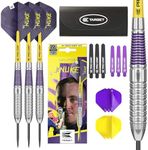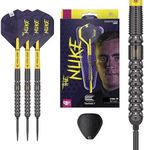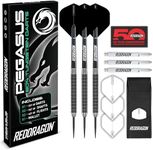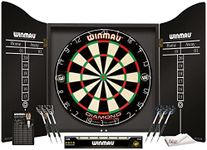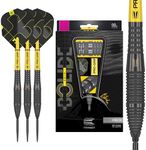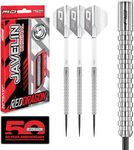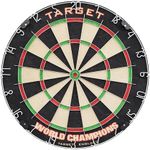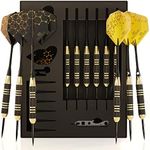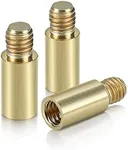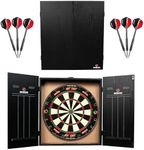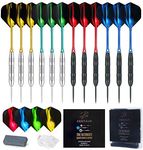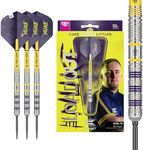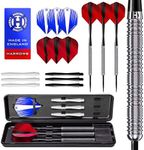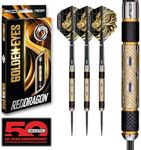Buying Guide for the Best Dart Sets
Choosing the right dart set can significantly enhance your playing experience, whether you're a beginner or a seasoned player. The key is to find a set that matches your skill level, playing style, and personal preferences. Consider factors such as weight, material, and grip to ensure you have the best possible control and accuracy. It's also important to think about where you'll be playing, as this can influence the type of darts you should choose. By understanding the different specifications and how they affect performance, you can make an informed decision that will help you enjoy the game to its fullest.WeightThe weight of a dart is crucial because it affects how the dart flies and how it feels in your hand. Darts typically range from 12 to 50 grams, with most players preferring weights between 16 and 26 grams. Lighter darts are easier to throw and may be better for beginners, while heavier darts can offer more stability and control for experienced players. Consider your throwing style and strength when choosing the weight; if you have a softer throw, lighter darts might suit you better, whereas a stronger throw might benefit from heavier darts.
MaterialDarts can be made from various materials, including brass, nickel-silver, and tungsten. Brass darts are affordable and suitable for casual players, but they are less durable. Nickel-silver darts offer a bit more durability and are a good middle-ground option. Tungsten darts are the most durable and provide a slimmer profile, which can help with tighter grouping on the board. If you're serious about playing and want a long-lasting set, tungsten is often the best choice. Consider how often you play and your level of commitment to the game when selecting the material.
GripThe grip of a dart refers to the texture and design of the barrel, which can affect how comfortable and secure the dart feels in your hand. Grips can range from smooth to heavily knurled or ringed. A smooth grip might be suitable for players who prefer a quick release, while a knurled or ringed grip can provide more control and stability. Your personal preference and playing style should guide your choice; if you find yourself struggling with control, a more textured grip might help improve your accuracy.
FlightThe flight is the part of the dart that stabilizes it during flight, and it comes in various shapes and sizes. Standard flights offer more stability and are suitable for beginners, while smaller or slim flights can allow for faster throws and tighter groupings. The choice of flight can affect the dart's trajectory and speed, so consider your playing style and the type of game you prefer. If you're new to darts, starting with standard flights is a good idea, and you can experiment with different shapes as you become more experienced.
ShaftThe shaft connects the barrel to the flight and can be made from materials like plastic, aluminum, or carbon fiber. Plastic shafts are lightweight and affordable but may not be as durable. Aluminum shafts offer more durability and are a popular choice among players. Carbon fiber shafts are the most durable and lightweight, providing excellent performance. The length of the shaft can also affect the dart's balance and flight; longer shafts can offer more stability, while shorter shafts can allow for quicker throws. Consider your level of play and how often you plan to use the darts when choosing the shaft material and length.
